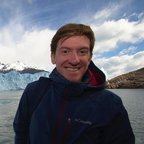Statistics of camera-based single-particle tracking
Camera-based single-particle tracking enables quantitative determination of transport properties and provides nanoscale information about material characteristics such as viscosity and elasticity. However, static localization noise and the blurring of a particle’s position over camera integration times introduce artifacts into measurement results even for a particle executing simple diffusion. Common data analysis methods based on the mean-square displacement do not properly account for these effects. In this paper, we analyze the statistics of tracking data for freely diffusing particles in realistic experimental scenarios. We derive a convenient and asymptotically optimal maximum likelihood estimator for the diffusion coefficient and for the magnitude of localization noise together with the corresponding Fisher information, which bounds the performance of all unbiased estimators. We find that the effect of varying the illumination profile during the camera integration time is quantified by a motion blur coefficient, R. We also find that a double-pulse illumination sequence maximizes the information content in some common experimental scenarios. Our results provide a rigorous theoretical framework and practical experimental recipe for achieving optimal performance in camera-based single-particle tracking.
- Source:
- Tags:
Backlinks
These are the other notes that link to this one.
